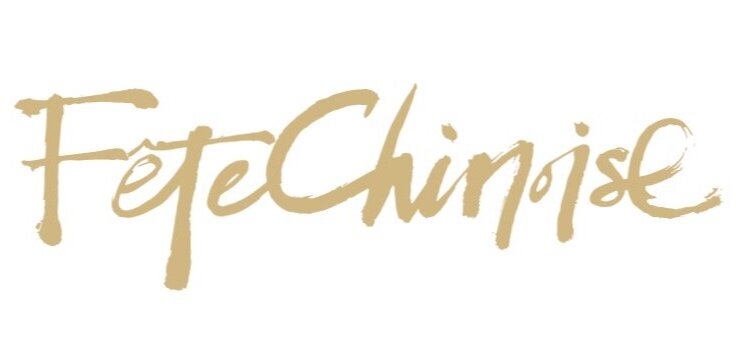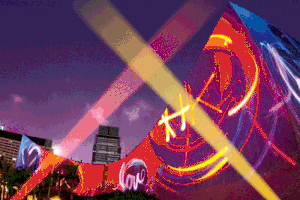The 3 Essential Films by Wong Kar-wai on Language and (Mis)Communication [This article may contain spoilers]
Written by Carson Chow
Edited by The Fête Chinoise Team
scene from the film “in the mood for love”.
SPONSORED BY THE HONG KONG ECONOMIC TRADE OFFICE OF TORONTO
Wong Kar-wai is an internationally recognized film auteur which belongs to the Hong Kong Second Wave cinema in the late 1980’s and early 1990’s. Being the first Hong Kong director to win the Best Director award at the Cannes Film Festival, poetic nostalgia and longing are often cited as the major themes of Wong Kar-wai’s cinematic aesthetics. When Wong Kar-wai took up the role as the artistic director of the highly popular exhibition called “China: Through the Looking Glass” at the Metropolitan Museum of Art in 2015, it was an opportunity for him to showcase, in another form of stage, how his cinematic vision could become a collaborative work with fashion designers and artists, to brilliantly encapsulate the visual poetry and cross-cultural dialogue between the West and the East.
In almost a full year devoid of going to the cinema and in times when we feel disconnected with the outside world, I have been thinking about Wong Kar-wai’s films more than ever. Here is my pick for Wong Kar-wai’s 3 most essential films on language and (mis)communication.
Scene from the film “chungking express”.
Pick #1: Chungking Express (1994)
Chungking Express is one of Wong Kar-wai’s early films and it is perhaps his most light-hearted and fun-filled film. Split into two parts: both involving a policeman who is struggling to move on from a romantic relationship to begin a new one. Significant too is that the titular building, Chungking Mansion, which is located in Tsim Sha Tsui, one of the busiest districts in Hong Kong, resembles the similarly crammed and crowded multicultural environment in the city in the 1990’s.
Contemporary Hong Kong films often mix languages and speeches in unexpected ways. Chungking Express is one such example. The impetus behind this is two-fold: to reflect socio-historical condition through language in a migrant-diasporic city and to address issues specific to his characters and their emotions in this plural-lingual environment.
In Chungking Express, you will see Indians speaking in Cantonese, Hong Kong locals speaking in Japanese – and at the same time Cantonese, Mandarin, and English – which necessarily conjures Hong Kong as a node in the transnational space and an immigrant city. In the first part of the film, we see two non-Hong Kong actors playing the leading roles: Japanese-Taiwanese actor Takeshi Kaneshiro plays a policeman known as Cop 223, and Taiwanese actress Brigitte Lin plays a drug smuggler who is known as the Blonde.
Wong Kar-wai deliberately (dis)places these two non-locals, who are forced to speak in other languages in the city, showing the (dis)connection and alienation of these two characters.
The film aims to show that the real communication in the modern world is not achieved by languages. When the two characters meet each other, they can finally communicate in their native mother-tongue – Mandarin -- with each other. Yet, it is far from real communication. The real communication is not through the common Mandarin language they speak but it is at the end when he decides to polish her high-heel shoes while she sleeps, and when she leaves a message later on his pager. These are important gestures of sentimental feelings that constitute a hint of real communication and connection between them, and this cannot be done through spoken words, no matter how many languages each of them can speak.
“The film aims to show that the real communication in the modern world is not achieved by languages... [they are] important gestures of sentimental feelings that constitute a hint of real communication and connection between them, and this cannot be done through spoken words, no matter how many languages each of them can speak. ”
scene from the film “happy together”.
PIck #2: Happy Together (1997)
One of the few Hong Kong films to feature gay romance. Wong Kar-wai took his characters, played by Tony Leung and Leslie Cheung, out of Hong Kong and moved the setting to an unfamiliar Buenos Aires in Argentina. The film was released in May 1997, which was before Hong Kong’s handover from British rule to mainland China where the political situation in Hong Kong was highly uncertain, and the film depicts the equally turbulent relationship of a gay couple.
On paper, Happy Together is a dubious proposition as it follows the gay couple on their trip in Buenos Aires. A central fallacy of a gay film that few manage to escape is the genre’s superficial commitment to fidelity and verisimilitude in portraying the LGBT subject matter and reality, and paradoxically, the edits, omissions and artistic liberties needed to highlight the sexual and cliché elements in order to attract audience. Yet, Wong Kar-wai is not concerned with the sexuality of his characters but he examines them as any couple struggling to adapt to their foreign environment and to the increasingly toxic relationship with each other. His focus remains on dimensions of (mis)communication and (dis)connection of modern relationship while at the same time he connects the theme with breathtaking imagery of South America.
The manipulative and abusive nature of the two men’s romantic relationship can be seen by their full-fledge direct communication, which attests powerfully not only to their failure to (re)connect, but also to their palpable inability to use words constructively. The colloquial and foul words reflect the two men’s working class, poorly educated background, and also their alienation as travelers / foreigners in the country. They use language to manipulate and provoke one another, rather than to express their genuine feelings.
The silent passages when the two men watch each other sleep definitely suggests that love does exist between them – their instinctual and affectionate gestures can only be performed between two people who have had a whole world of history between them. These gestures are, however, lost in the mix of their stark verbal exchanges, thereby unequivocally pushing them towards (un)happy separation that the film had posed in the end when they realize they are also only travelling through each other’s life / path.
scene from the film “in the mood for love”.
Pick #3: In The Mood for Love (2000)
Wong Kar-wai perfectly summed up the subtlety and restraint in his cinematic world of this bygone era in In the Mood for Love. Set in the 1960s, the film follows two neighbours (played by Tony Leung and Maggie Cheung) who both suspect their respective spouses are carrying out an affair with one another.
With In the Mood for Love, Wong Kar-wai blends formal styles to tell the hopeless love story of a couple who becomes victims of morality during the 1960’s. As the two main characters “investigate” (more like “imagine”) the extramarital affairs carried on by their respective spouses, the two also develop a bond but their love affair is something both of them dare not to consummate as they are bound by their conflicting self-awareness - they cannot become like their unfaithful spouses who they despise, they are expected to behave in accordance with the moral codes in the 1960’s, and importantly, they cannot allow their reputation to succumb to the pressure of gossip and criticism, especially when Maggie Cheung’s character is an immigrant from Shanghai to Hong Kong – she cannot allow her carefully built image and status to fail because of her desire and feelings.
The film features crowded Hong Kong apartment buildings full of émigrés from Shanghai. Language serves as a heavy marker of the Mainlander’s status in the film: the landladies and their friends speak exclusively in Shanghainese but only speak Cantonese when forced to interact with local Hong Kong-ers. On the other hand, Maggie Cheung plays a modern émigré, who, like so many, adapts herself into Hong Kong life, adopts the local dialect perfectly, brings in foreign inventions (e.g. rice cooker), and only speaks Cantonese. The comparison and contrast of the two generations become a naturalized process for these Shanghainese in Hong Kong during the 60’s.
Because of the overt restraint on their own emotions, the characters never use words or dialogues to express their true feelings. Language, again, becomes so reticent that the characters can only show their emotions through subtle actions: her cooking of the sesame syrup for him when he is sick, his renting of room 2046 for them to meet privately, the unanswered ringing telephone, the writing, the playacting, and the food sharing fill in the gaps of silences and answer what is left unsaid between the two.
However strong their feelings towards each other are, the two characters do not have the courage to advance their emotions and hasten their longing, like the window plane that stands between them; and instead of their imminent affair, they are left holding with a handful of regrets and yearnings. The characters clearly are unaware of how their avoidance to express their honest feelings prevents their happiness over the years, believing themselves to have secured the moral conduct, and thereby to willingly suppress their romance and desires, and surrender to become the objects of betrayals, leaving a permanently unsatisfied and unfilled gap.
“[These films are] depicting the modern issue of lack of human connection and communication, it reaches through generations and histories and across harbours and cinematic traditions to better elucidate the here and especially the now.”
The endearing allure of Wong Kar-wai’s films lies not just in their ravishing beautiful cinematography and formal inventiveness but in the way that, by depicting the modern issue of lack of human connection and communication, it reaches through generations and histories and across harbours and cinematic traditions to better elucidate the here and especially the now. In times like right now, when we are distanced and have time to reflect on our relationships and connections, there is no better time to watch and think about the themes in Wong’s films.









![Harmony in Cinema: Fagara (2019) [Spoiler Alert]](https://images.squarespace-cdn.com/content/v1/55e06149e4b0e924d81546a2/1602175418584-U39NLAH9YGBNIH0MLYJS/Fagara02.jpg)





